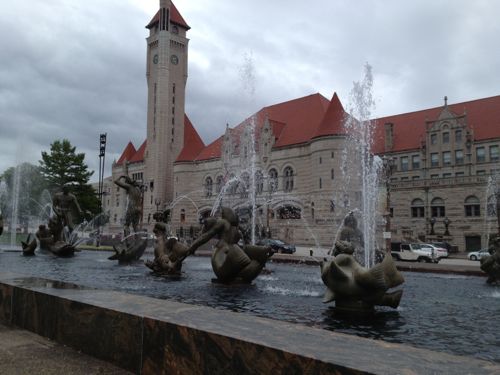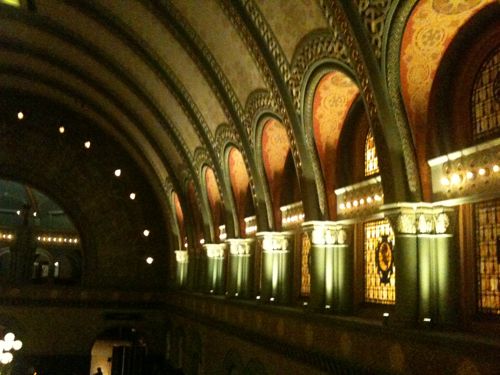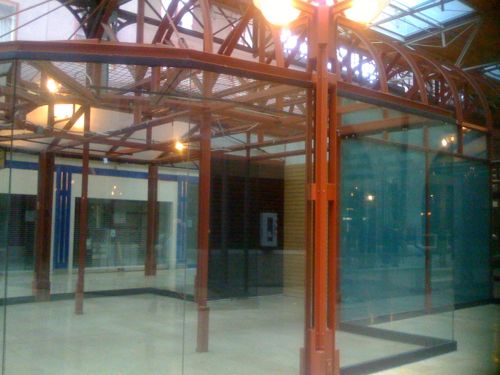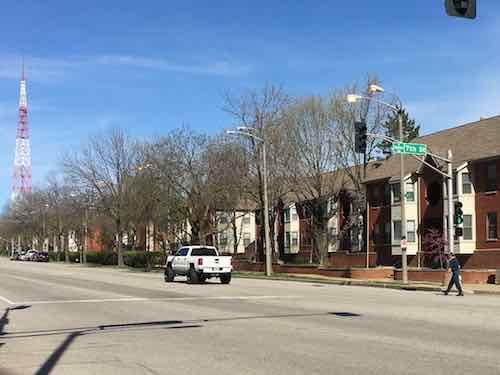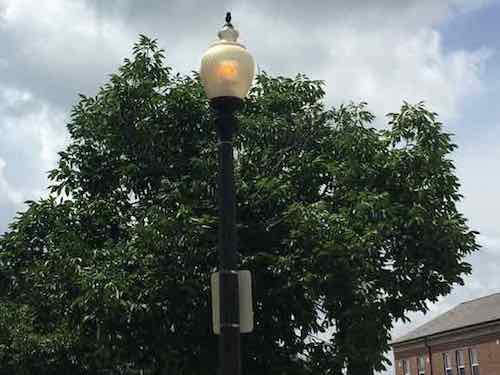?In April I reported to the city how the streetlights in the Columbus Square neighborhood were on 24/7. They’d been on…
Posted by UrbanReview ST LOUIS on Tuesday, June 25, 2019
Stop Signs Remain Where Cross Street Was Removed For NGA West Project
|
|
In St. Louis stop signs are quite numerous, to the point many rarely come to a full and complete stop. STL-Style even sells a “roll sign” shirt.
Our elected officials like stop signs, from March 2017:
You can’t just erect a stop sign by fiat, not in St. Louis, as Alderman Cara Spencer has learned.
Spencer, 20th Ward, put up the stop sign Wednesday afternoon at Chippewa Street and Marine Avenue because she said it was a dangerous intersection near a school. The city’s Streets Department removed it Thursday.
Mayor’s office spokeswoman Maggie Crane said no actions were taken against Spencer because “we recognize that this was a publicity stunt.”
Spencer said she had tried since September to get city officials to put one there, but didn’t receive an answer until January. The city told her there was not enough data to prove the intersection was dangerous or merited a stop sign, but recommended she introduce legislation to have one erected.
Spencer said that process might have taken until May to get a stop sign posted. The Board of Aldermen began a spring recess in February and will not reconvene until April. (Post-Dispatch)
Legislation is how stop signs usually get installed. Yes, a bill is introduced. A committee hearing is held. A majority of the 28-member Board of Aldermen must approve, it’s then signed by the mayor — becoming an ordinance. Two such bills were introduced at their last meeting before summer break — see BB91 & BB92.
But what about the reverse, when an intersection is no longer an intersection?
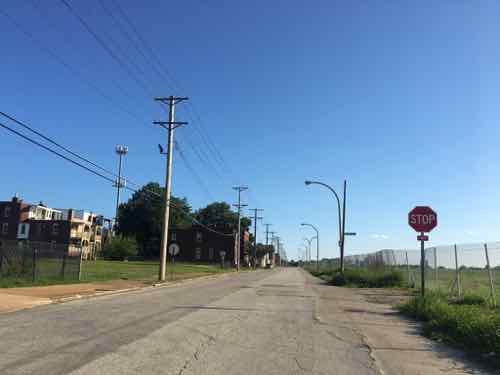
The intersection of 22nd Street and Montgomery Street no longer exists, but the stop signs on 22nd remain. In my mind these signs should’ve been removed when Montgomery Street was vacated, closed, or physically removed. Yet they remain.
While I’m here I wonder if the NGA, a high security government facility, will oppose on-street parking on the west side of 22nd Street. If so, it should be narrowed accordingly.
I’ll be contacting the city’s Citizen Service Bureau about this stop at an intersection that no longer exists.
— Steve Patterson


